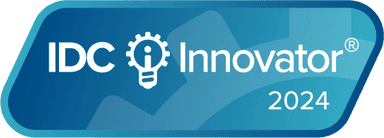Oct 01, 2025
Pay-as-You-Go Pricing Models in SaaS: Advantages, Challenges, and Examples
In this post, we explore the rising importance of PAYG pricing in SaaS, outline how it works, unpack its benefits and operational challenges, and highlight examples and best practices.
The traditional SaaS subscription model—charging a fixed fee for access—has dominated for two decades. But as customer expectations evolve and technologies mature, the shift toward pay-as-you-go (PAYG) pricing models and usage-based billing is accelerating.
In this post, we explore the rising importance of PAYG pricing in SaaS, outline how it works, unpack its benefits and operational challenges, and highlight examples and best practices. Whether you’re evaluating a new pricing model or looking to better operate your existing one, this guide will help you navigate the key considerations.
Why Pay-as-You-Go Pricing Is the Future of SaaS
Pay-as-you-go is more than a pricing strategy—it’s a reflection of a broader shift in SaaS toward aligning monetization with value delivered. Instead of paying for access, customers pay for the benefit they get. This pricing model resonates particularly well in today’s buyer-centric environment, where flexibility, transparency, and fairness are prized.
As Todd Gardner of SaaS Advisors puts it, "Usage-based pricing is the natural outgrowth of megatrends in SaaS—lower barriers to entry, heightened competition, and the rise of PLG. It shifts accountability and risk toward vendors, but it also builds trust and unlocks growth".
What Is a Pay-as-You-Go Model?
PAYG pricing charges customers based on a variable (let’s call this ‘usage’). This could be measured in API calls, compute hours, GB of data processed, or similar metrics. Unlike flat-rate subscriptions, PAYG fees are variable and can be paid:
- In advance via credit-based models (customers prepay and draw down usage)
- In arrears, with bills calculated after usage is recorded
- Hybrid, combining a fixed commitment to a certain amount of usage (usually paid in advance) plus a top-up for any usage above that amount (paid in arrears).
Variants of this model include:
- Usage-based pricing – e.g., $0.01 per API call
- Work-based pricing – e.g., per report processed or per workflow executed
- Outcome-based pricing – e.g., pricing tied to successful transactions or revenue uplift
These contrast with one-off fees, fixed subscriptions, or seat-based pricing, which often misalign cost with value delivered, especially if usage varies significantly by customer.
Advantages of Pay-as-You-Go and Usage-Based Billing
1. Easier Adoption
Lower upfront costs mean customers can try your product without commitment, which aligns well with PLG motions and expands the funnel.
2. Customer Satisfaction
Customers appreciate that they only pay for what they use—reducing “waste” and improving perceived fairness.
3. Costless Upsell
There’s no need to involve Sales to drive expansion—usage growth naturally leads to revenue growth.
4. Margin Control
When linked to variable costs, PAYG helps preserve unit economics. For example, AI apps with high compute costs benefit from pricing aligned to usage.
5. Reduced Logo Churn
Customers can flex spend down in hard times without canceling, allowing you to retain logos and potentially upsell again later.
6. Higher Net Revenue Retention
Increased alignment with value often leads to superior NRR—a key metric for SaaS valuation.
The Challenges of Metered Billing Software and Consumption-Based Pricing
Despite the benefits, PAYG introduces real operational complexity:
1. Granular Usage Tracking
Capturing accurate, granular usage data across multiple systems requires robust infrastructure and event pipelines.
2. Billing Automation at Scale
Custom contracts and unique pricing terms become unmanageable without automation—especially across thousands of customers.
3. Real-Time Billing Data Availability
Customers expect transparency about their usage and billing - they need ready access to running totals, and won’t be satisfied with a single monthly invoice, in arrears.
4. Forecasting & Revenue Predictability
Revenue can become harder to project—especially without historic usage data or predictive analytics capabilities.
5. Sales Compensation Complexity
If Sales is incentivized on upfront commitments, a shift to usage-based pricing may require rethinking comp models.
6. Compliance Requirements
Regulatory standards like ASC 606 and IFRS 15 require auditable billing records and reliable revenue recognition processes—something many billing systems can’t support natively.
When to Use a Pay-as-You-Go Pricing Strategy
Not every SaaS business is suited to PAYG. According to Todd Gardner and m3ter’s research, it works best when:
- The end user is a machine (e.g., API-driven products)
- You have high variable delivery costs driven by usage (e.g., compute, storage, AI inference)
- There’s a clear value metric that can act as a proxy for benefit derived (e.g., transactions processed, messages sent)
- You operate a PLG model
- Usage intensity varies widely across customers
The m3ter Approach: Automate Billing Across CRM and ERP Systems
Implementing PAYG at scale requires more than just a spreadsheet—it requires metered billing software that integrates across your stack. m3ter supports:
- Usage data capture from product systems
- Real-time rating, even across multi-attribute and complex contract terms
- Automated data flows between CRM (e.g., Salesforce) and billing and ERP (e.g., NetSuite)
m3ter delivers this as invisible infrastructure that enables functions in the systems they already use - e.g. Sales in Salesforce, Finance in NetSuite - and keeps disruption of existing workflows to a minimum.
Best Practices to Succeed with Usage-Based Billing
- Instrument your product to generate accurate usage data, and process and store this data so it is ready for billing..
- Choose the right pricing metric—one that's a good proxy for value and easy to understand.
- Automate data flows between systems to remove manual billing work and reduce errors.
- Invest in transparency tools like usage dashboards and alerts to help customers avoid billing surprises.
- Support hybrid pricing to offer predictability (e.g., commit plus overage) while still aligning price with value.
James Wood, a leading monetization expert, advises: “Eliminating wide pricing tiers and moving to granular per-unit pricing can improve net dollar retention by up to five percentage points”.
Real-World Examples of PAYG in SaaS
Some of the most successful SaaS companies today rely on PAYG pricing:
- Snowflake charges per second of compute and per byte of storage.
- AWS popularized PAYG in cloud infrastructure with granular billing.
- Twilio charges per API interaction (messages, calls, etc.).
- HubSpot, while mostly seat-based, has adopted usage pricing in parts of its suite.
- Shopify now ties more of its pricing to transaction volume, especially in its payments business.
These models illustrate how PAYG can scale from infrastructure to application layer products—when the pricing metric aligns with value.
Conclusion: Monetize Like a Modern SaaS Company
Pay-as-you-go pricing can unlock scalable growth, reduce adoption friction, and increase customer lifetime value. But it requires investment in infrastructure, automation, and cross-functional coordination.
With m3ter, you can automate billing, eliminate revenue leakage, and stay compliant with ASC 606/IFRS 15—all while delivering a better customer experience.
Ready to get started? Talk to us about how m3ter can help you implement and scale a PAYG model..
FAQs
Q1 - What’s the difference between usage-based and pay-as-you-go billing?
Usage-based billing is the more general term, meaning customers are charged based on how much of a service they consume (e.g. API calls, storage, compute hours). Pay‑as‑you‑go is a type of usage-based billing that tends to have low/no fixed fees or commitments. They’re similar terms and in practice are often used interchangeably.
Q2 - How can I track product usage across multiple platforms or services?
You need a metered billing system that can: ingest usage data from multiple sources (APIs, files, agents); normalize and attribute data to the correct customers; and apply pricing logic across different product lines or services. m3ter’s infrastructure supports this out-of-the-box.
Q3 - What billing infrastructure do I need to support a pay‑as‑you‑go model?
To support PAYG at scale, your stack should include: reliable usage metering; flexible rating capability (multi-attribute, real-time); automated data flows from/to CRM (e.g. Salesforce), product systems, and ERP/billing (e.g. NetSuite), and; data lineage (ie ‘auditability’) for revenue recognition and compliance purposes. m3ter provides this infrastructure as “invisible middleware” between your product, CRM, and finance systems.
Q4 - How do you handle tax and compliance with usage-based pricing?
Handling tax and compliance requires: accurate, auditable billing data; clear documentation of pricing and usage rules; integration with ERP and tax engines, and; alignment to accounting standards like ASC 606 and IFRS 15. m3ter supports all of these, helping you future-proof your billing operations and pass audits with confidence.
Q5 - Is usage-based pricing better for startups, scaleups, or enterprises?
It can work for all stages, but fit depends on your product and GTM strategy. Startups benefit from easier adoption and costless upsell. Scaleups unlock efficiency with PLG and reduce churn. Enterprises value pricing flexibility and alignment with variable cost structures.
For companies with high usage variability, machine-based consumption, or clear value proxies, usage-based pricing (including PAYG) is often the best choice—regardless of size.
You might also like…
Subscribe to Counting Tokens
Actionable insights on AI revenue, billing, and finance.
Ready to upgrade your monetization stack?
See a demo, get answers to your questions, and learn our best practices.
Schedule a demo


